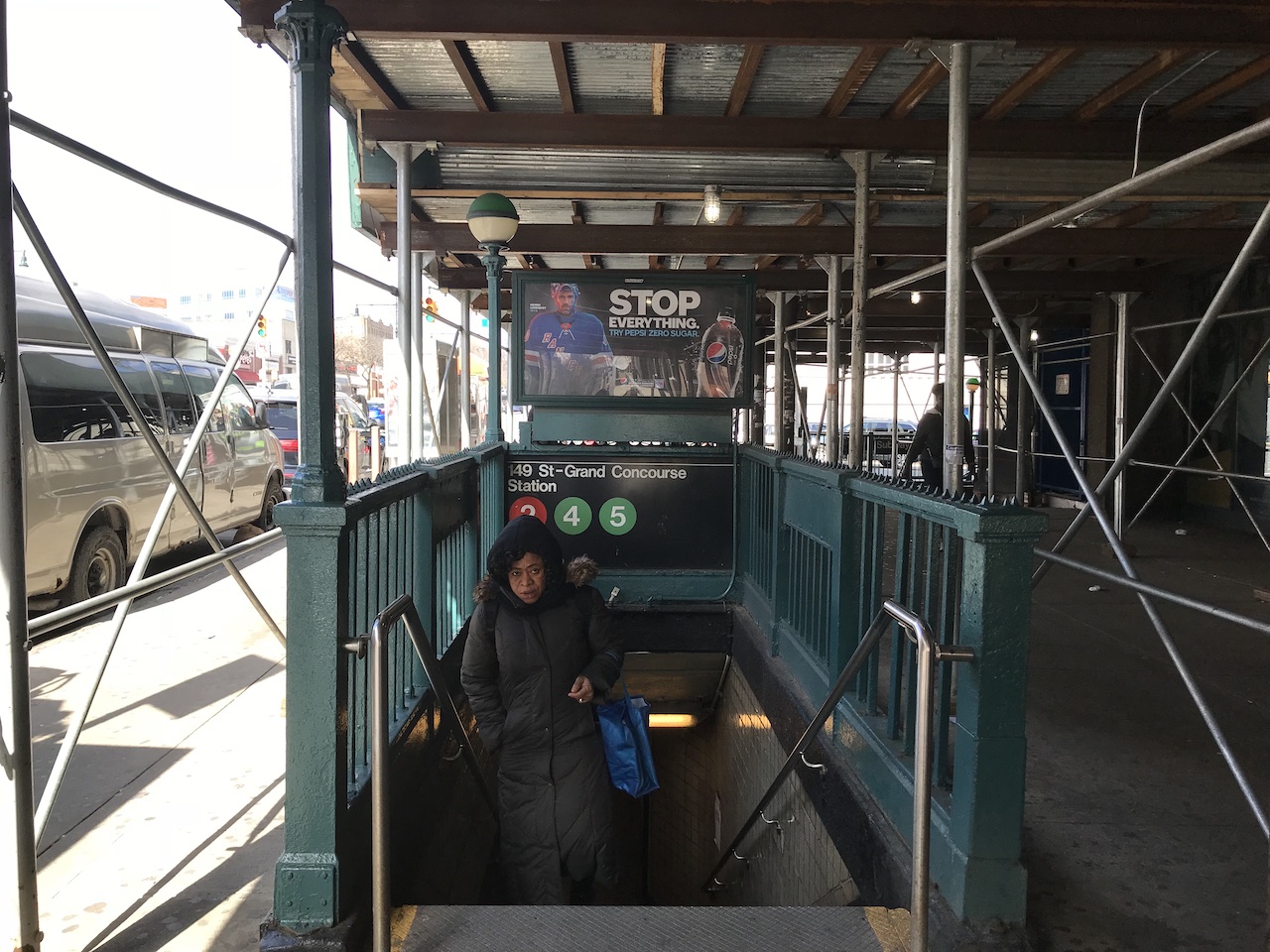
Community members cheered when the MTA released its capital program in September 2015 and allocated $45 million for elevator access at the 149 Street-Grand Concourse subway station.
Almost four years have passed but the station remains without functioning elevators and community members are asking, what is taking so long?
“We feel slighted,” said Edwin Figueroa from the South Bronx Community Congress. “Our citizens are getting grayer and slower and we need elevators.”
Design for the project was expected to begin in 2016 and the station was supposed to become ADA-accessible last year. But the project is still in the design phase and its design-build contract will be awarded later this year, allowing construction to begin next year, according to the MTA.
In a statement to Mott Haven Herald, MTA spokesman Shams Tarek said the agency is “excited to provide a fully ADA-accessible station for our customers at 149 Street-Grand Concourse. We have a rock-solid commitment to make another 50 stations accessible through the next capital plan.”
The elevators at the train stop were shut off in the 1980s for security reasons. In 2012, a group of seniors from the Michelangelo Apartments asked Maximino Rivera, a former State Assembly candidate, and the South Bronx Community Congress to convince the MTA to reopen the elevators.
The station has two exits outside Hostos Community College, where Dylan Nandalall, 22, is a student. He cannot use the train station because he has scoliosis – a disorder that causes a curvature on the spine – and uses a walker. For Nandalall, using the subway is a “pain in the butt” because of stairs and the absence of a functioning elevator.
“I think it is unfair,” said Nandalall, “the fact that people with disabilities and other challenges are not being accounted for.”
Sabrena Washington, 50, has asthma and a bad knee, which have forced her to rely on the bus to return home in Pelham Bay. “The stairs is too much,” she said. “It is degrading.”
According to the Subway Accessibility Maps created by the Center for Independence of the Disabled, NY, the train stop serves a population of 44,140. Sixteen percent of the population is disabled and 34 percent live in poverty.
This is not the first time the Bronx has made headlines related to ADA accessibility. Earlier this month, in a lawsuit by Bronx Independent Living Services, the U.S. District Court ruled the MTA had an obligation to install elevators whenever it renovates a station. This suit was filed after elevators were not included in a renovation at the Middletown Road station in Pelham Bay.

